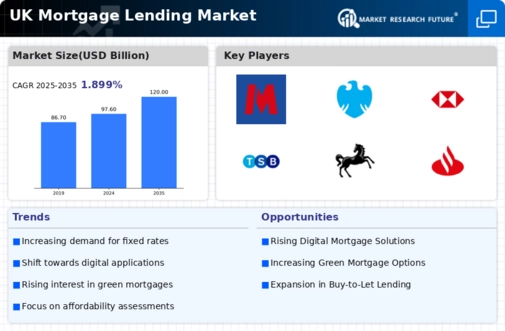Demographic Shifts
Demographic changes are significantly influencing the mortgage lending market. The increasing number of millennials entering the housing market is reshaping demand for mortgage products. As of November 2025, this generation is projected to account for over 40% of new mortgage applications, driven by a desire for homeownership and investment. Additionally, the trend towards multi-generational living is prompting lenders to consider more flexible mortgage options that cater to diverse household structures. This shift in demographics may lead to an increased focus on products that accommodate varying income levels and financial situations. Lenders must adapt to these evolving consumer preferences to remain competitive in the mortgage lending market. Understanding the nuances of demographic trends will be crucial for developing effective marketing strategies and product offerings.
Regulatory Changes
The market is subject to evolving regulatory frameworks that impact lending practices. Recent adjustments in regulations, particularly those aimed at enhancing consumer protection and promoting responsible lending, have reshaped the landscape. For instance, the Financial Conduct Authority (FCA) has implemented stricter affordability assessments, which require lenders to evaluate borrowers' financial situations more rigorously. This shift aims to mitigate risks associated with over-lending and defaults. While these regulations may enhance consumer confidence, they could also restrict access to credit for some borrowers, particularly those with non-traditional income sources. Consequently, lenders must navigate these regulatory challenges while striving to maintain competitiveness in the mortgage lending market. The balance between compliance and market growth remains a critical consideration for industry stakeholders.
Rising Property Prices
The market is currently influenced by the upward trajectory of property prices across the UK. As of November 2025, average house prices have surged by approximately 8% year-on-year, creating a challenging environment for first-time buyers. This increase in property values necessitates larger mortgage amounts, thereby driving demand for lending products. Lenders are adapting by offering a variety of mortgage options to accommodate buyers' needs. The heightened competition among lenders to capture market share may lead to more attractive interest rates and terms, ultimately benefiting consumers. However, the rising cost of borrowing could also deter some potential buyers, indicating a complex interplay within the mortgage lending market. The ongoing fluctuations in property prices will likely continue to shape lending strategies and consumer behavior in the foreseeable future.
Interest Rate Fluctuations
Interest rates play a pivotal role in shaping the dynamics of the mortgage lending market. As of November 2025, the Bank of England's base rate stands at 4.5%, reflecting a cautious approach to monetary policy. This rate influences mortgage rates offered by lenders, impacting borrowing costs for consumers. A rise in interest rates could lead to increased monthly repayments, potentially discouraging new borrowers and affecting housing market activity. Conversely, a decrease in rates may stimulate demand for mortgages, as lower borrowing costs make homeownership more accessible. Lenders are closely monitoring these fluctuations to adjust their offerings accordingly. The interplay between interest rates and consumer sentiment is likely to remain a key driver in the mortgage lending market, influencing both lender strategies and borrower decisions.
Technological Advancements
The market is experiencing a transformation driven by technological advancements. Innovations such as digital mortgage applications and automated underwriting processes are streamlining the lending experience for consumers. As of November 2025, a significant portion of lenders has adopted online platforms, enabling quicker processing times and enhanced customer service. This shift towards technology not only improves efficiency but also allows lenders to gather and analyze data more effectively, leading to better risk assessment and tailored mortgage products. However, the reliance on technology also raises concerns regarding data security and privacy. As the mortgage lending market continues to embrace digital solutions, the challenge will be to balance innovation with consumer trust and regulatory compliance.

















Leave a Comment